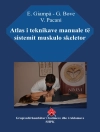Fictional, but thorough and realistic, case studies are at the heart of Physician Well-Being. One per chapter, they allow readers to get inside the minds of physicians and understand their lives and stressors, from long hours and staff shortages to onerous administrative demands.
For although physicians tend to live, on average, 2 years longer than nonphysicians in the general population, when it comes to mental health, the situation is more dire: 10–15 years after entering medical school, the average physician has twice the level of burnout of the average professional nonphysician. Suicide rates among physicians are 1.4 and 2 times higher than in the general population for men and women, respectively. Abuse of prescribed drugs is also higher than in community control subjects.
Physician Well-Being argues that the major reasons for physician distress are organizational and systemic and focuses on solutions that work, maintaining that changes in the culture and process of medicine aren’t just possible, they’re essential — not only for improving the well-being of health care providers but also for patient care and safety.
The volume’s opening chapter examines the current culture of medicine and the unintended drawbacks of professionalism. Subsequent chapters delve into Scenarios in a large health system and multidisciplinary clinic, focusing on solutions that work in current typical health care environments Solutions needed to improve the onboarding of physicians in the early years of their career, starting in pre-med programs Finding meaning in medicine and navigating the challenges of medical marriages, focusing on solutions that range from alternative medical and nonclinical careers to the use of technology to work remotely and more efficiently Each chapter includes concise literature reviews that highlight the most salient points, as well as a detailed list of references for readers interested in further exploration. The insights in the book will be useful not only to physicians and medical students but to anyone with an interest in the culture of health care.
Bolstered by knowledge gleaned from the author’s own 30-year career as a psychiatrist, during which he has treated hundreds of physicians as patients, Physician Well-Being offers real-world solutions that serve to make health care systems more effective as the population ages and medical practice becomes ever more complicated.
Table of Content
Chapter 1. ‘Our Dedicated Dad’Chapter 2. Health Care Is a Team Sport Chapter 3. A Unified Mission Chapter 4. Trust, Mentoring, and Innovation Chapter 5. Pre-Med: Vulnerability and Trauma Chapter 6. Medical School: Implicit Biases and a Well-Being Curriculum Chapter 7. Residency: A Narcotic Addict’s New Career Chapter 8. Cognitive Dissonance and Defining Meaning in Medicine Chapter 9. Medical Marriages: Caring for Each Other Chapter 10. The Joy and Meaning of Medicine Index
About the author
Peter Yellowlees, MBBS, M.D., is Chief Wellness Officer at UC Davis Health and Professor of Psychiatry and Vice Chair for Faculty Development in the Department of Psychiatry at the University of California–Davis in Sacramento, California.












